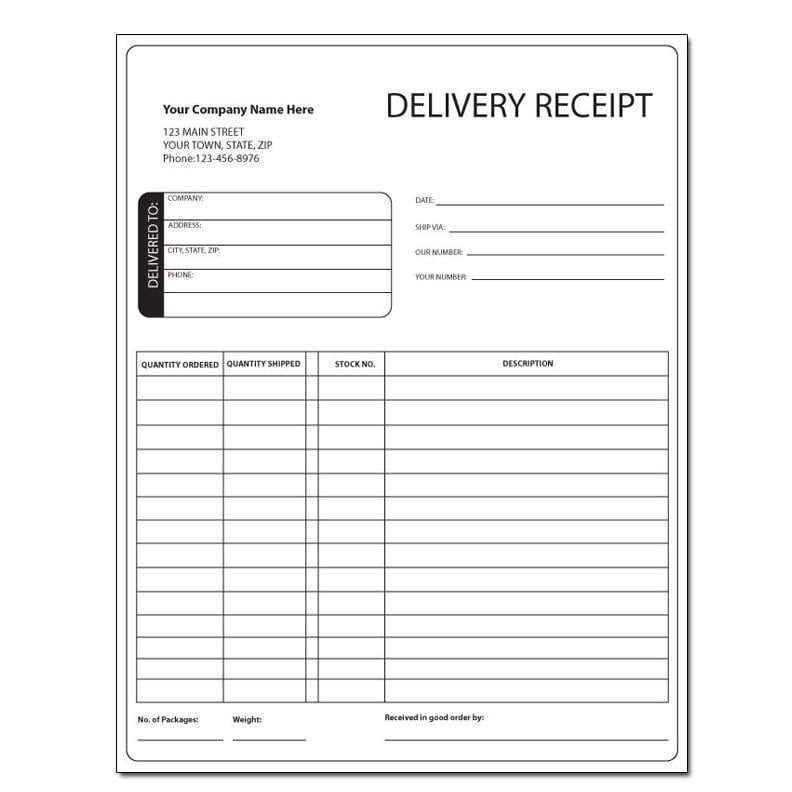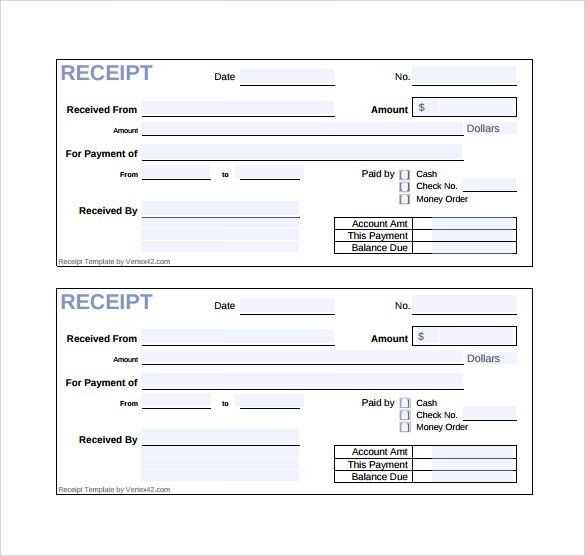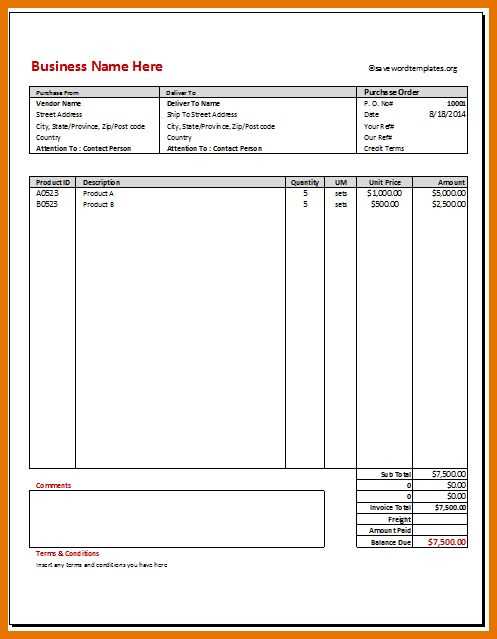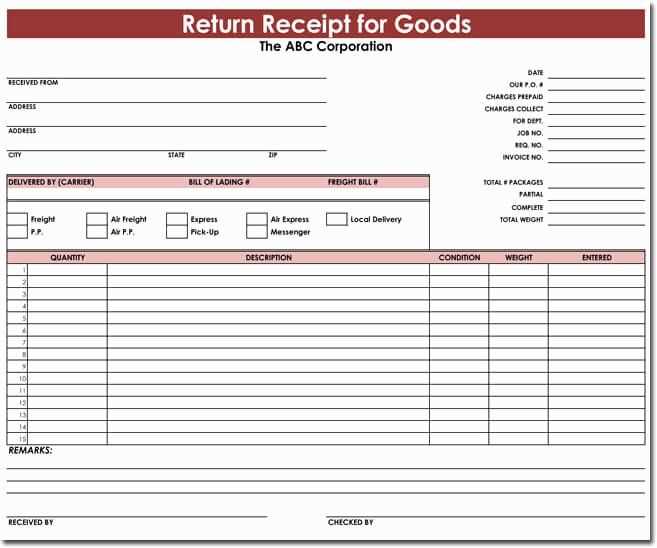
Creating a purchase order receipt template simplifies the process of documenting transactions between buyers and sellers. It’s an effective way to track order details, including quantities, prices, and delivery terms. Start by including the buyer’s and seller’s contact information, along with the order number and date of purchase. This sets the foundation for a clear and organized receipt.
Incorporate a section for the itemized list of purchased goods or services, detailing the quantity, unit price, and total cost for each item. For clarity, it’s helpful to include columns for taxes and discounts if applicable. Also, add space for delivery or shipping information to provide transparency on the transaction.
A well-structured template ensures both parties are on the same page and helps prevent confusion or disputes later on. Make sure to leave room for payment terms and instructions, such as payment due dates or accepted methods, to avoid misunderstandings regarding settlement.
Purchase Order Receipt Template

A well-organized purchase order receipt template is vital for keeping track of transactions and ensuring smooth operations. The template should clearly outline the details of the order, delivery, and payment terms to avoid confusion. Here’s what you should include:
- Receipt Number: Assign a unique number to each receipt for easy reference and tracking.
- Supplier Information: Include the supplier’s name, address, and contact details.
- Buyer Information: Include the buyer’s name, company, and contact information.
- Purchase Order Number: This links the receipt to the specific order placed.
- Order Date: Clearly state the date the order was placed.
- Item Details: List all items purchased, including descriptions, quantities, and unit prices.
- Total Amount: Show the total cost of the purchase including taxes and discounts.
- Payment Terms: Specify the agreed payment method and due date.
- Delivery Information: Include delivery date, address, and any special instructions.
Key Tips for Using the Template
- Keep the template consistent to avoid mistakes when filling out receipts.
- Ensure all fields are filled accurately to prevent discrepancies later.
- Store copies of receipts for record-keeping and easy retrieval if needed.
Using this purchase order receipt template will help keep transactions clear and organized for both parties.
How to Structure a Purchase Order Receipt

Include a clear header with the title “Purchase Order Receipt” at the top of the document. Follow it with a unique receipt number for easy reference and tracking.
List the date the order was received, along with the name and contact information of the supplier. This helps identify the receipt’s origin.
Next, outline the buyer’s details, including their name, address, and contact information. This ensures both parties are clearly identified.
Detail the items included in the order, such as product names, quantities, unit prices, and any relevant product codes. Break down the costs by item and show the total for the entire order.
Include a section for payment terms, stating the payment method and due date. This clarifies the financial aspects of the transaction.
End with any notes or special instructions related to the order, such as delivery information or specific terms. This provides extra clarity on how the order should be handled or processed.
Formatting Tips for Readable Templates

Choose clear and consistent font styles throughout the document. Use a simple, professional font like Arial or Calibri with a readable size, typically 10-12 pt. Avoid decorative fonts that might distract from the content.
Ensure proper alignment. Left-align all text, and use a clean layout with adequate white space between sections. This prevents the template from feeling cramped and makes the information easier to digest.
Use headings and subheadings to break the document into manageable sections. These provide structure and help readers locate relevant information quickly. Make headings stand out with bold text or a slightly larger font size.
Incorporate bullet points or numbered lists where possible to organize information clearly. These make it easier to scan through key points without reading through lengthy paragraphs.
Incorporate tables to present data such as order details, pricing, or shipping information. Keep them simple, with enough space for each entry, ensuring readability without overcrowding the content.
Avoid excessive use of color or shading. Stick to one or two accent colors that complement the overall design. Use them sparingly for headings or to highlight important sections.
Lastly, include clear instructions or prompts in the template to guide users in filling it out. Use concise language and visual cues, like arrows or icons, to direct attention where necessary.
Customizing the Template for Different Industries
Adjust the purchase order receipt template to match the specific needs of various industries by incorporating relevant details. For example, in manufacturing, include product part numbers, production dates, and quality checks. For retail, focus on SKU codes, sales tax rates, and promotional discounts.
- Retail: Ensure that the template captures SKU numbers, discounts, tax calculations, and promotional offers. Tailor the layout to reflect customer-facing information like order status and delivery tracking.
- Construction: Include project codes, specific material descriptions, delivery schedules, and contractor information. Make space for approvals and compliance details to streamline the procurement process.
- Healthcare: Add fields for patient ID numbers, medical supply categories, and billing codes. Ensure HIPAA compliance by including privacy disclaimers and secure data handling instructions.
- Technology: Include software version numbers, license keys, and support terms. Organize sections for maintenance schedules and warranty information for hardware purchases.
For each industry, make sure the template is flexible enough to adapt to varying requirements while maintaining clarity and simplicity. Use customization features like drop-down lists for product categories or predefined tax rates to speed up order processing and minimize errors.
How to Add Tax and Shipping Details
Include tax and shipping information directly in the template to ensure clear communication with the customer. Begin by determining the applicable tax rate based on the customer’s location. Add a line item for tax under the pricing section and calculate the total tax based on the subtotal of the order.
Adding Tax Information

Include the tax rate percentage and total tax amount. For example, if the tax rate is 8%, calculate 8% of the subtotal and display it clearly as a separate line. If your business operates in multiple regions, include a drop-down menu or field where the customer can select their location, triggering automatic tax calculation based on their address.
Shipping Details
Clearly list the shipping method and its cost. Include options for different shipping speeds if available, such as standard, expedited, or express. For each shipping option, provide an associated cost and ensure the final shipping charge is added to the total. It’s also helpful to add a field for estimated delivery dates based on the chosen method.
Managing Payment Terms on the Template
Clearly define payment terms within the purchase order receipt template. Specify the due date for payments, acceptable payment methods, and any early payment discounts or late fees. This ensures that both parties are aligned on financial expectations from the start. Set a standard payment period, such as “30 days from invoice,” or tailor it to suit specific agreements. Additionally, highlight any potential penalties for late payments to avoid confusion later on.
To make this easy to track, include a section dedicated to payment details. This should include the following fields:
| Field | Description |
|---|---|
| Payment Method | Specify whether payment will be made via bank transfer, credit card, cheque, etc. |
| Due Date | Clearly state the date when the payment is due. |
| Discounts | Indicate any discounts for early payments, if applicable. |
| Late Fees | List any penalties that apply if payment is delayed beyond the due date. |
By incorporating these terms directly into the template, you help both parties maintain clarity throughout the transaction process.
Integrating Purchase Order Receipts with Accounting Software

Link your purchase order receipts directly to accounting software to streamline financial tracking. First, choose an accounting platform that supports seamless integration with your purchase order system. Ensure both systems can communicate using an API or built-in connectors, minimizing manual data entry.
Set up automatic receipt generation within the accounting system. This can eliminate errors that may arise from manually transferring information. When a purchase order receipt is created, it should automatically update accounts payable and inventory records, maintaining accuracy across all financial statements.
For smoother integration, use customizable fields to match the details of the purchase order receipt with your accounting software’s structure. This includes vendor names, payment terms, and product costs. This setup ensures that every transaction is properly categorized in your financial reports.
Regularly test the integration to catch discrepancies early. This proactive approach helps avoid issues during audits and ensures that your financial records are up-to-date and compliant.


